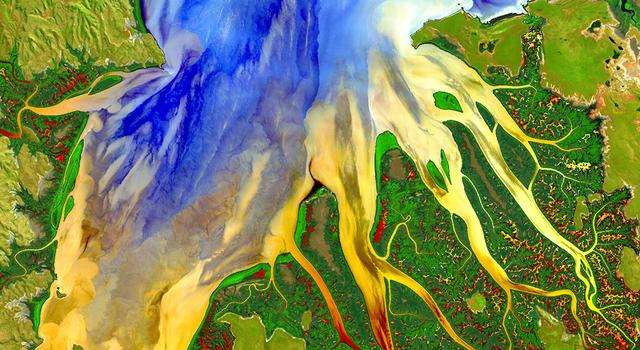Using Light to Study Planets

This image of Western Australia was created using image data captured by the Landsat-8 satellite. Enhancing various portions of the image captured in different wavelengths and then reassembling them highlights the rich sediment and nutrient patterns in a tropical estuary area and makes complex patterns and conditions in vegetated areas more visible and distinguishable. Image credit: NASA/USGS Landsat; Geoscience Australia. Source: Landsat gallery.
NASA/USGS Landsat; Geoscience Australia
| Levels |
|
|---|---|
| Material Type |
|
| Heliophysics Big Ideas |
|
| NGSS |
|
| Heliophysics Topics |
|
| Material Cost per Learner | $1 – $5 |
| Language | English |
In this activity, students will build a spectrometer using basic materials to observe the light emitted and absorbed by several sources. This will be used as a model for how NASA uses spectroscopy to determine the nature of elements found on Earth and other planets. For higher grades, this activity can also be used to discuss advanced spectroscopic topics, such as how NASA research is advancing spectroscopic techniques to teach us more about plant life on Earth.
Resource materials can be found here:
https://www.jpl.nasa.gov/edu/resources/lesson-plan/using-light-to-study-planets


























